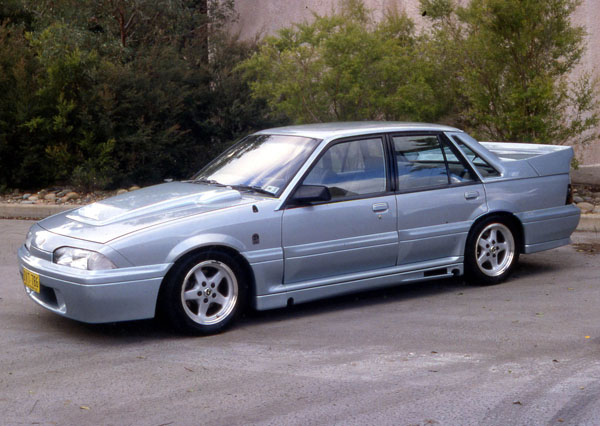From 1980 to 1987 racing car legend Peter Brock had considerable input into the design of Holden special vehicles for sale by the Holden Dealer Team. Towards the end of 1986 Brock commenced fitting these cars with a device he called an `Energy Polarizer’. Holden engineers and Brock could not agree on the technical merit of such a component which was claimed to provide improved performance. In the end this resulted in a rather unpleasant spat that ultimately led to a split in February 1987.
Because of the value seen by Holden for their brand in having successful performances on the race track, Holden decided to establish its own special vehicle operation. They already had a good relationship with the British company Tom Walkinshaw Racing (TWR), who had recently been engaged to develop a unique body kit which would improve the aerodynamic efficiency of racing Commodores. This was to be used on a new car planned by HDT Special Vehicles so the opportunity was taken to establish Holden Special Vehicles (HSV). Accordingly in October 1987 a new division was formed under a ten-year agreement between Holden and Tom Walkinshaw Racing.
Their first car, a Group A, was produced by HSV in March 1988. As was the usual practice this road car was built to make the new fuel injected V8 Commodore eligible for use in Group A Touring Car racing. The rules that apply to Australian vehicle manufacturers require that at least 5000 cars be produced, with 500 sporting variants. The HSV Commodore VL was clad with 65kg of fibreglass aerodynamic aids which when fitted gave the car quite a different appearance. From the rear the difference was very noticeable. At its launch the managing director said: “To some people it may be over the top but everything on this vehicle is there for a good reason. In many ways this is the most advanced car ever produced in Australia”.
These observations certainly proved correct when the car was raced at Bathurst. At 250km/h on Conrod Straight it needed much less power to push it through the air than if the body had remained standard. On corners the downforce created allowed more tyre grip and higher speeds. The huge rear wing was only part of the aerodynamic package on the rear of the Walkinshaw Commodore, as it became known. Shrouding of the side rear windows and shaping of the low rear undertray also played their part. For street driving many owners had to remove the front air dam as it often caused clearance problems.
HSV also produced a much more sedate model called the Calais SV88 which was released in April 1988. This car was based on a standard Calais V8 but with engine, suspension and interior modifications. Whereas the SS Group A was fitted with a manual five-speed transmission, the SV88 had a three-speed automatic. The only changes to the SV88 body were the fitting of front and rear spoilers and a louvred grille.
The HSV Commodore VL did not prove to be a great seller. Without the Brock association and with rather outlandish styling as well as a high price tag, 500 cars would have been hard to shift. GMH’s decision to produce 750 Group A VL units made the sales task even more difficult.









